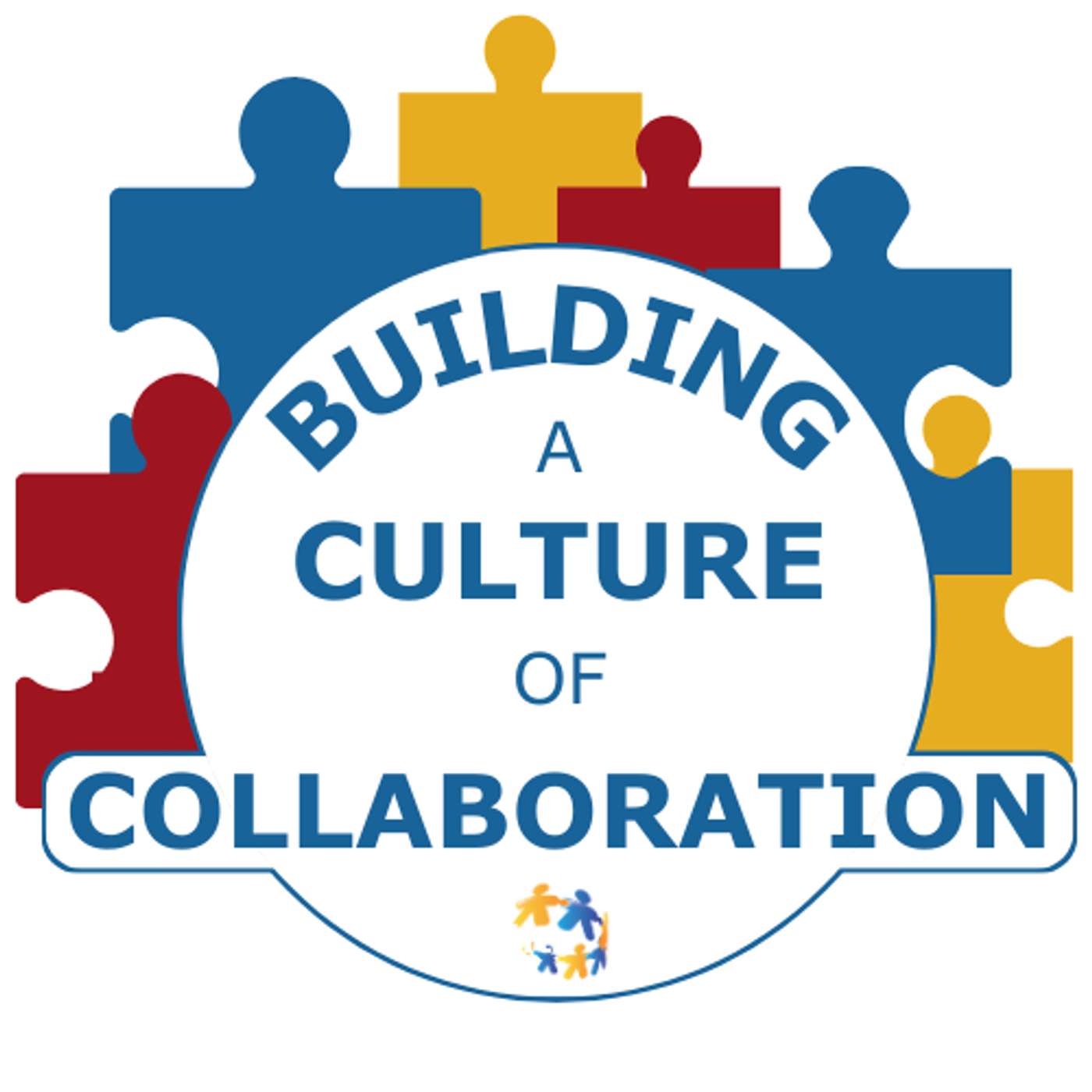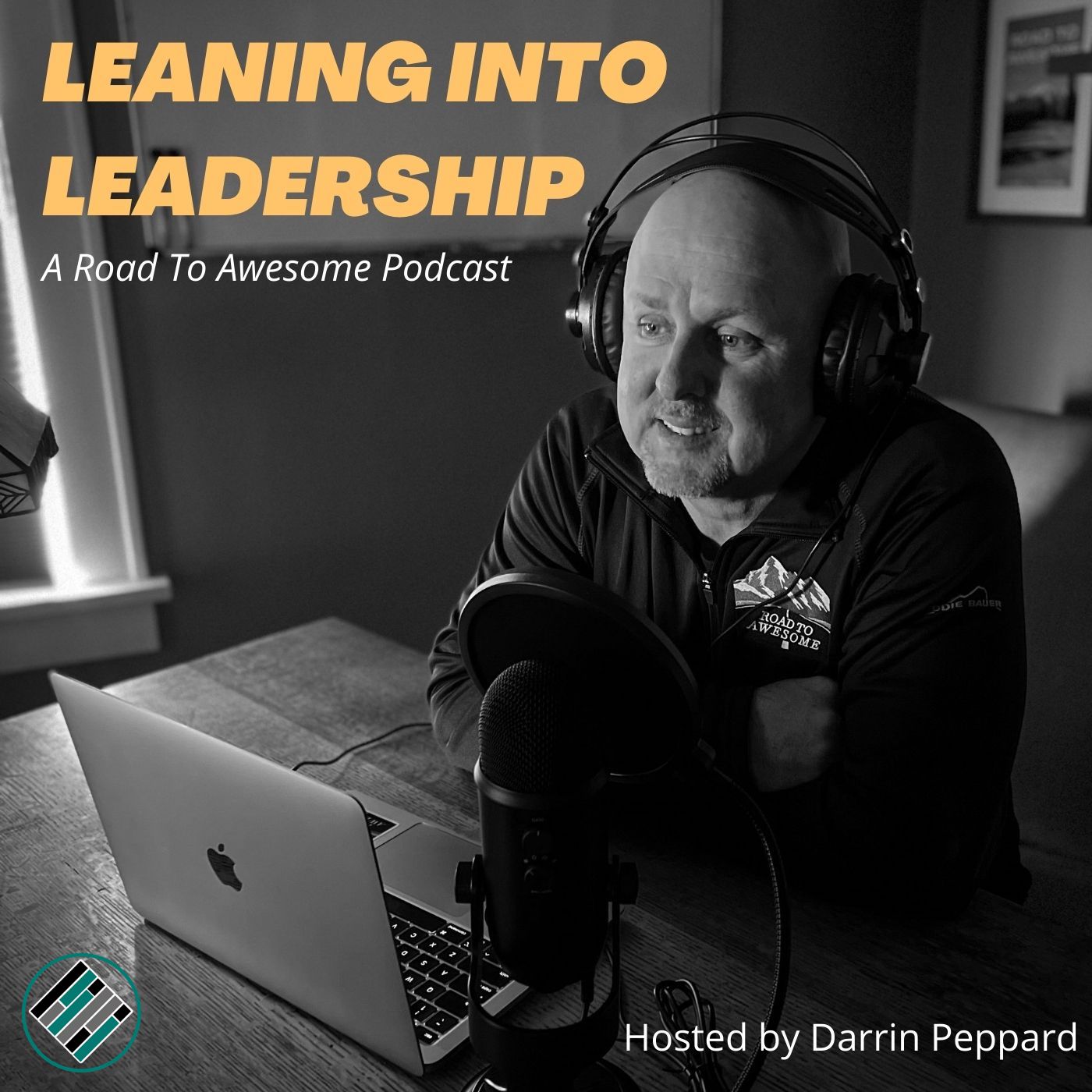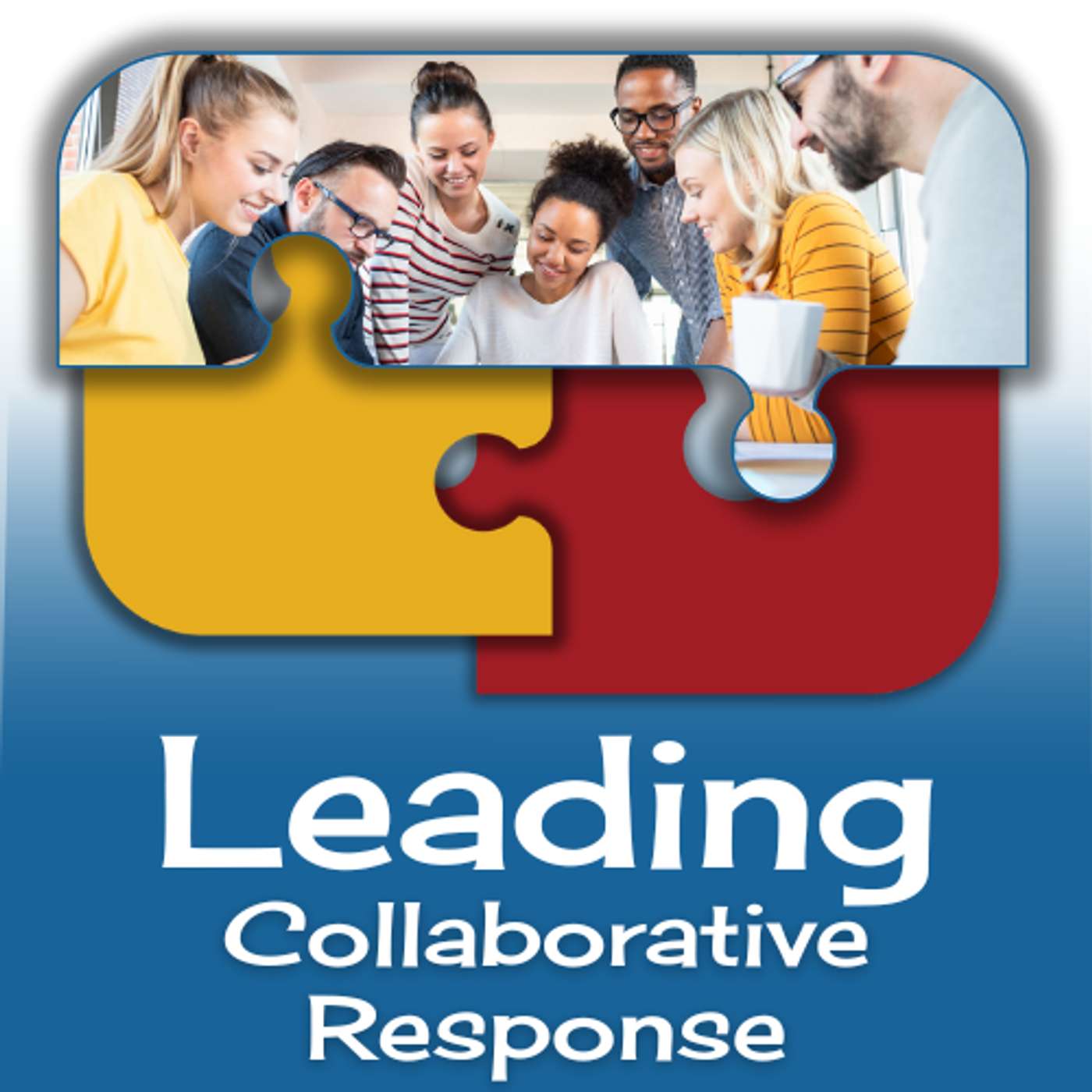
Educational Leadership with Principal JL
Principal JL is an educational leader who explores various topics facing educational leaders today! The Mission of this podcast is to inform and inspire other Educational Leaders on how to be their best for their Schools by honing their skills and talents so they may impact their teachers, staff members, students, parents/guardians, and community members positively for their School District! Come with a Growth Mindset as we journey through Educational Leadership!
Educational Leadership with Principal JL
Episode 30: When Tragedy Strikes: A Principal's Guide to Navigating Student Death and School-Wide Grief
Death is something no school leader wants to face, yet crisis management becomes an unavoidable reality when tragedy strikes. Drawing from the painful experience of navigating four student deaths in just three years, this deeply personal episode explores the profound challenges of leading a school community through grief and loss.
The sobering statistics tell only part of the story. With suicide ranking as the second leading cause of death among 10-24 year olds and over 6,600 youth suicides in 2021 alone (CDC, 2023), schools face an unprecedented mental health crisis. These aren't merely numbers—they represent faces, stories, and futures abruptly ended, often because young people with still-developing brains see permanent solutions to temporary problems.
Behind every effective crisis response stands a carefully orchestrated team. From verifying facts to identifying those most affected, from staged communication to comprehensive support systems, we break down the essential components of compassionate crisis management. The episode details practical strategies for supporting both students and staff, acknowledging that teachers must navigate their own grief while simultaneously supporting vulnerable students.
Perhaps most compelling is the question that emerges from these experiences: while we train educators to recognize distress signals, should we be empowering students to do the same? As the frontline witnesses to their peers' struggles, could students become our most valuable allies in suicide prevention? This thought-provoking discussion invites educational leaders to collaborate on innovative solutions to protect young lives.
This conversation isn't just about managing crisis—it's about reimagining how we approach mental health in schools. Join me in exploring how we can better support our school communities through their darkest moments and perhaps prevent future tragedies through collective wisdom and courage.
National Center for Education Statistics report from May 31, 2022
Teach Better Mid Roll Network Ad
Click Here to Connect with Principal JL:
welcome back everybody to the educational leadership with principal jl podcast. I kind of took a couple weeks off here. I had a lot of things to think about, especially for this episode. Um, something that you know is really kind of personal to me, because over the past three years as a principal of the high school that I'm at, I've been faced with unimaginable death of a student, not just once, not twice, but I've had to work through four different student deaths in the past three years as a principal. So in today's episode I really wanted to talk about you know, how we responded. How did the crisis team respond? What did that look like? This is something that you know you'd never want to go through as a principal. It's something as a leader that we have to be ready for in case that happens. But really there's some things that really are getting to me that I feel like I need to share out but also maybe help someone that is in this role on how to manage through those crisis as a building principal, because they're never, they're not fun. I mean this is this sucks. This is something, like I said, I've done, you know, four times in the last three years, but also even in my last principalship I had to deal with a student death, and so a lot of the things that, as a principal, that I've done and learned through this process I just wanted to share out, because I hope that you never have to go through these things but at the same time, there is right ways and wrong ways to work through these unimaginable crises that not just your students go through, but your faculty will go through, and I wanted to kind of really talk to you guys about that. With these experiences, they've reshaped the way I kind of view things With crisis management. Most importantly, the role we play is supporting the mental health of students, staff and the community. Supporting the mental health of students, staff and the community.
Principal JL:The reality of crisis in schools. According to the CDC, suicide is the second leading cause of death among individuals between the age of 10 to 24. In the United States, in 2021 alone, over 6,600 youth in that age range died by suicide. The numbers are not just statistics. They represent faces, stories and futures of students that are no longer here, and so that's important to think about. These kids are finding permanent solutions to temporary problems, and so that's really hard for us as adults to really wrap our minds around. But that's what we're working through. And for me, you know, out of these four deaths we had one that was a car accident and then three were really by suicide. And that's really hard, you know, to really come to terms with, because, as a building principal, we do the trainings with our staff.
Principal JL:We are, you know, taking preemptive measures're really puzzled by, you know, why couldn't we see the signs, why couldn't we prevent these things from happening? And that really makes you step back and think, kind of what we're doing, what can we do better and how can we help intervene before students get to that part? And I take those things very seriously and I take those things to heart because I never want anybody to have to go through these tragedies the way that we have had over the past three years. So you know, I'm going to kind of talk about how our crisis team responds, kind of who's involved, what have we done to kind of support not just the students but also the faculty members and community members that go through this. So you know, we look at schools as being a safe place. You know we have. Look at schools, as you know, they're immune to tragedies, but we aren't. They're immune to tragedies, but we aren't. Life happens, things happen and we have to be able to respond to those crises when they do happen.
Principal JL:And really, for us, I would say we respond very, very well, and unfortunately we can't respond well because we've done it, but at the same time, we respond well because we have a great people one and for us, we're a bigger district, so we have multiple layers to our crisis response team and it really does start with our superintendent. Our superintendent is going to get notified and what that notification? The superintendent will then reach out to the building principal and say, hey, this has happened. I'm going to get the crisis team involved and for us, we have two different crisis teams and we do that because we don't want the same people responding to a crisis every time. We're a big enough district we can do that, but in smaller districts you may have the same people responding to two crises as they come up. So with that, the superintendent will initiate the crisis team. We'll actually get together and we will get the facts together.
Principal JL:Our biggest thing as our response with the crisis team is to really collect the facts, get things together and these are the people that are on our crisis team is to really collect the facts, get things together and these are the people that are on our crisis team response. We have our superintendent, the building principal that is affected by that students and their building. That building principal is a part of that. We have school counselors from that building as well, but we also have school counselors from other buildings that will come in to help support. We bring in mental health professionals from around the community, but also from other school districts. We have our community liaison are part of that team and we also have our regional ESU 9 team that will come in and help support our school when we go through a crisis.
Principal JL:So when the student, when something happens to a student and they pass away from a tragic death of some sort, we get notified. The superintendent, like I said, will get things rolling and then our goal is to meet quickly, as soon as possible, so we can get the facts. We want to verify facts because that's the information we want to get out to our faculty, to our students, to our parents and guardians, so they know what's going on, because I guarantee you, with social media, things are going to be out there, people are going to be talking about it, and so we want to try to respond in a way that says hey, we are aware, here's some facts, you know, this is how we're going to respond, and so that's really important to keep track of as you do this. And so the first thing we do, after we verify facts, is we try to identify who's affected the most. You know who are these students' friends, you know their family members, their family members, siblings, teachers. We try to figure out who's going to be mostly affected, who has a deep relationship with that student, and we want to be able to try to identify those people so we can provide support for them through this crisis, so they are supported as well.
Principal JL:And then we want to develop a response plan, and kind of what we do with our response plan is we want to get out information to different sets of people. We have our faculty, we have our parents and we are very careful on how we word the information. We don't want to use words even though we know that the student death was, you know, maybe a suicide. At that time, when we are talking about, we just talk about we have a death of this student. We are very saddened by it. Here's the supports and here's the things we're going to have in place for students, these are the supports, these are the things we're going to have a place for our faculty, and so I think it's really important to be very detailed with that information, and every situation is different, and so what you put into that, what we utilize, is emails to get out to faculty, get out to students and teachers, but we do it in stages. So we will notify our faculty first to kind of let them know what's going on, then we'll notify the parents and guardians and then let them know what's going on. Then we'll notify the parents and guardians and then let them know, and then after that we wait till the next day to notify students, to kind of let them know what's going on. But we also want to let parents and guardians know so they can prepare their students for the coming school day when those things happen.
Principal JL:So what we also do that you know sounds cold and cruel is we actually take the student out of our system. We mark them with a decease, and the reason why we do that is we don't want to have a faculty member come in and see that student's name or see their picture in their roster. We want to reduce the amount of things that could trigger a faculty member to have you know to think like, oh my gosh, you know, this is real, this is you know, this student's no longer here. We don't want to have that. We want to try to make you know that process as streamlined as possible so we don't have unnecessary triggers, and that's kind of why we do that, and that's the part that I think sucks the most is when we have to do those things. The thing is is we we develop plans to for our for the day after something like this happens.
Principal JL:So some things that we do Is we bring in Multiple counseling teams. We have teams, like I said, from our ESU, from other local school districts, as well as people within our school districts that will be a part of that day, and so what we do is we have different rooms To where we have overflow of kids Come into the counseling office. We can have them go to different people to get the support they need so they could talk out their feelings and different things like that. The things you got to remember is these events may trigger a student or a faculty member of a trauma that they've had in their past and a lot of times that does happen to where you know, when you have a death of a student, they could trigger hey, I remember, when you know this family member, this happened in my family and that brings those traumas back to not just students but the faculty members. So I think it's really important to make sure you have supports for your students but also have supports for your faculty member. So I think it's really important to make sure you have supports for your students but also have supports for your faculty member.
Principal JL:So, for students, what we do is we have more counselors that will follow that student's schedule to check in with those classes, check in with those teachers, check in with those students that had classes with that student, so we can make sure that they're okay and they understand there's people here to help them. The other thing we do is, if we tell our faculty what we'll do is I'll have a meeting with faculty, I'll give them the facts, even though I send an email, I'll talk to them about hey, these are the supports we have. These are the things we want to be able to do. We're going to try to make school as normal as possible. Kind of grieve, let kids talk about it. But, yeah, it's okay for faculty members to grieve and if they need support, we have people that are in the building that will actually step into their room so they can decompress and get out and get themselves to a spot where they can go back and do the work that they need to do.
Principal JL:It becomes a very long and tough day, but we have a lot of supports in place to do that and I always want to make my staff know that. We know that you're human too and you're going to grieve, you're going to have feelings about what's going on, and if you need support, let us know, because we'll get that support to you. And if you need to talk to somebody, here's some things we can do to help support that. So I think that's another piece, too is taking care of your staff as well as your students, and for me, one thing that I do is I try to get to my staff members. I will go to the staff members with the student, check in on them and then I try to check in on all the other staff members to make sure they're doing okay, see where they're at, make sure if they need support and those things like that. So that's really important that I do as a building principal is to make sure my staff is okay, as well as the students when it comes down to it. And if a staff member sees a student struggling and the student needs support, we send them to the counseling it. And if a staff member sees a student struggling and the student needs support, we send them to the counseling office and from there, the counselors will get them to a person to help them get the support they need, especially if we have a lot of people coming in that are upset and grieving through that process. I think that's really, really important to do as well With that.
Principal JL:As a principal, these things are tough. I had to learn to take care of myself, too. I worry about my staff, I worry about my students. But I did a lot of reflecting on this last one. I mean, it wasn't very long ago that we had to assemble a crisis team due to a student death, and really I thought a lot, and that's why I kind of stepped away the last couple of weeks from podcasting, because this just bothered me. I didn't understand why we have this happening, why did we have these types of deaths over the last three years?
Principal JL:And here's some things I want to share with you. We are in a mental health crisis. We're not just in an academic crisis, we're in a mental health crisis. So we have students that struggle with academic, but we also have students that are struggling with their mental health. In a 2021 survey by the National Center for Education Statistics, 70% of public schools report an increase in students seeking mental health services and 76% of students report staff voicing concerns about students' percent of students report staff voicing concerns about students' depression, anxiety and trauma. And that comes back in 2022. Not very long ago, those statistics are true, and here's the challenge that I have for you guys.
Principal JL:We train our faculty to recognize signs of distress. We train them. I know, because I go through the training. I know what the signs are, I know what they are, but my next thing is are we training our students? Do we need to train our students to understand those same signs and distresses that we can recognize as faculty members? Because, let's think about it, we can only see so much and do so much with what we have. But guess who is that first line of defense? It's our students.
Principal JL:And so what if we trained our students on how to recognize the signs and how to handle those things, because sometimes teenagers or students are the first ones to see their peer in crisis, but they don't always know what to do. They don't always understand that what seems like to be the end of a temporary problem is a permanent solution. You know, their brains are still developing. They have prefrontal cortexes as the part of the responsibility for long-term planning and rational decision-making. Their prefrontal cortex is not all the way developed until they're about age 25. That's why teens see permanent solutions to temporary problems.
Principal JL:And how can we fix that? How can we teach our kids to recognize the signs, get an adult involved? How can we intervene as teachers before it's too late? Or as educators, can we empower students to help with that so they could speak up and support each other, so we as adults can help intervene quicker? I don't know if that's a solution, but that's something I've been thinking about a lot.
Principal JL:I would like to invite you guys to collaborate on this. You know I don't have all the answers, but I'm asking questions. I'm trying to figure this out. As educational leaders, we need to figure out how can we help our students recognize these things so maybe we can try to prevent some of these tragedies from happening With that guys. I hope that you guys reach out and if you guys have ideas on things about how we can get better at trying to help our students so we don't have these things, I'd love to hear from you. I have the fan mail link that you can just send to me. You know, hey, I have this idea and I'd really like to hear from you and I'd like to connect with you on solutions to this issue that I've seen grow over the last four or five years as a principal, grow over the last four or five years as a principal. So I thank you guys for listening to this very deeply personal episode and if you take anything away from this conversation, let it be this.
Principal JL:Leadership in times of crisis is not about having all the answers. It's about showing up with compassion, clarity and the courage to ask the hard questions. It's how do I show up for my faculty, how do I show up for my students, how do I show up in a way that I'm supporting them through this crisis? That's important to remember, but also, you need to take care of yourself as well. I hope you guys will reach out and give me ideas on how I can help my students, so we are not going through this crisis anymore and, honestly, I'm tired of having to work through a crisis team and I'm really hoping that we can figure out solutions so we can help our students, so they don't feel like they have to have a permanent solution to a temporary issue. And so, with that said, guys, I hope you guys have a great day. I hope you guys are finding ways to help your students emotionally. And until next time, take care of yourself and take care of one another.
Podcasts we love
Check out these other fine podcasts recommended by us, not an algorithm.

The Empowered Principal® Podcast
Angela Kelly - Education Podcast Network
Principal Center Radio
Justin Baeder
The Jordan Harbinger Show
Jordan Harbinger
The Dave Ramsey Show
Ramsey Network
Against the Rules: The Big Short Companion
Pushkin Industries
LEAD FROM WHERE YOU ARE
Joe Sanfelippo
Changing the Narrative
Joe Sanfelippo
Urban Principal: Leadership Lessons
Bret Anderson
Building a Culture of Collaboration
Jigsaw Learning
The Interview Chair
Jimmy Casas
Leaning into Leadership
Darrin Peppard
Making Key Changes
Lori Schwartz Reichl
Leading Collaborative Response
Jigsaw Learning
Catching Up with Casey
Casey Watts, Clarity-Driven CEO & Leader
2Principals Podcast
Kevin Jost & Jason Paurus
Proud Principals Podcast with Tony Cattani
Tony Cattani
The Out of the Trenches Podcast
outofthetrenches